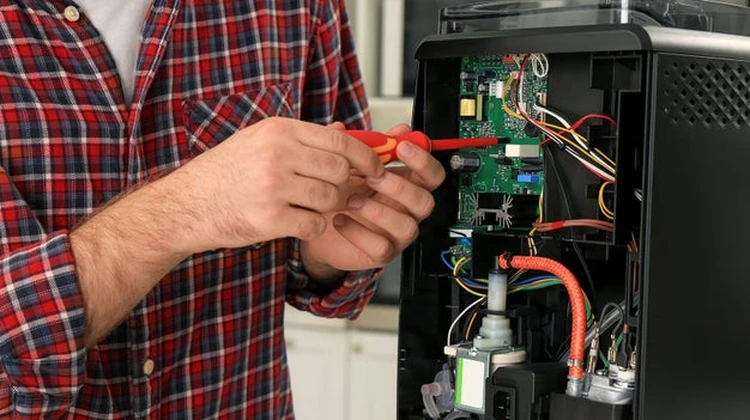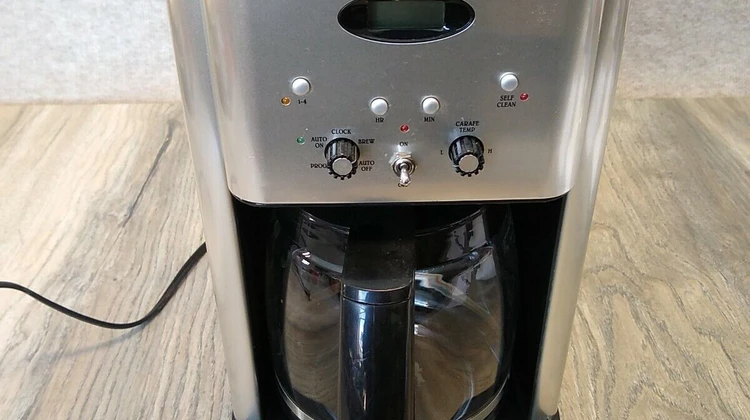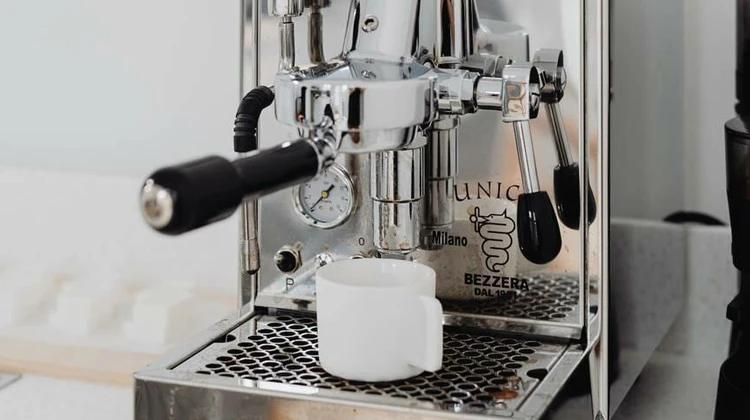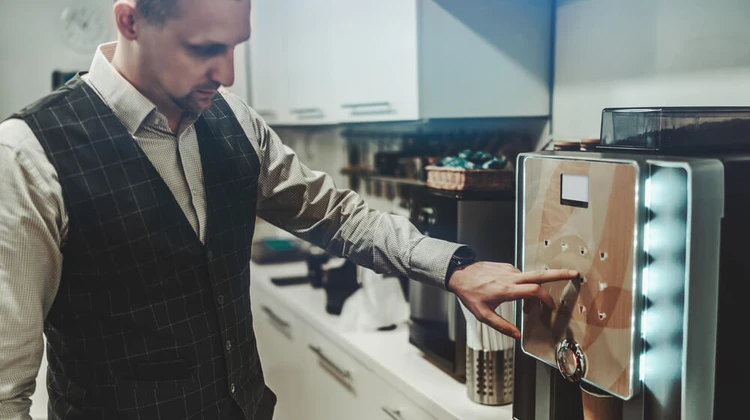Disclaimer: As an Amazon Associate, I earn commission from qualifying purchases.
Morning coffee is a sacred ritual for many, a moment of solace before the day begins. But what happens to those used coffee grounds? Can you reuse coffee grounds in a coffee maker? This question has puzzled coffee enthusiasts for years, sparking debates about flavor, sustainability, and practicality.
With over a decade of experience in the coffee industry and countless hours spent experimenting with brewing techniques, let’s delve into the intricacies of reusing coffee grounds.
The Science Behind Coffee Grounds
Coffee grounds are a complex mixture of compounds, including caffeine, chlorogenic acids, and various oils. During brewing, hot water extracts these compounds, resulting in the rich flavors and aromas we enjoy. However, the extraction process is not perfect. The first brew captures the majority of soluble compounds, leaving behind a residue that is less flavorful and lower in caffeine content.
Studies have shown that the first brew extracts about 20-25% of the soluble compounds in coffee grounds. Reusing these grounds results in a significantly weaker brew, as the remaining compounds are harder to extract. This is why subsequent brews tend to be lighter in flavor and lower in caffeine. Coffee experts and baristas agree that the best flavor is achieved with fresh grounds, but reusing grounds can still yield a drinkable cup if done correctly.
Environmental Impact of Coffee Grounds
Discarding coffee grounds contributes to environmental waste, but there are sustainable alternatives. Reusing coffee grounds is one way to reduce waste and promote sustainability in the kitchen. Environmental studies highlight that coffee grounds are a significant contributor to organic waste, which can be composted or repurposed to minimize environmental impact.
According to the Environmental Protection Agency (EPA), organic waste makes up a substantial portion of landfill content. By reusing or composting coffee grounds, we can reduce this waste and contribute to a more sustainable kitchen. This practice not only saves resources but also aligns with broader environmental goals of waste reduction and recycling.
Can You Reuse Coffee Grounds in a Coffee Maker?
The straightforward answer is yes, but with caveats. Reusing coffee grounds requires careful handling to maintain flavor and avoid potential health risks. Here’s a step-by-step guide to effectively reuse coffee grounds:
Step-by-Step Guide
- Store Used Grounds Properly: After the first brew, remove the grounds from the coffee maker and let them dry completely. Store them in an airtight container to prevent mold growth and retain any remaining flavor.
- Mix with Fresh Grounds: For a better-tasting brew, mix the used grounds with fresh ones. A 50/50 mix can help balance the flavor.
- Adjust Brewing Time: Increase the brewing time slightly to extract more flavor from the reused grounds. However, be cautious not to over-extract, as this can lead to bitterness.
- Clean the Coffee Maker: Regularly clean your coffee maker to prevent the buildup of residue, which can affect the taste and performance.
Coffee maker manuals and guidelines from reputable manufacturers often recommend against reusing grounds due to flavor and hygiene concerns. However, with careful handling, it is possible to extend the life of your coffee grounds.
Pros and Cons of Reusing Coffee Grounds
Reusing coffee grounds has its advantages and disadvantages. Understanding these can help you make an informed decision:
Advantages
- Cost Savings: Reusing grounds can reduce the amount of coffee you need to purchase, leading to cost savings over time.
- Environmental Benefits: Reduces waste and contributes to a more sustainable kitchen practice.
- Milder Flavor: Some people prefer a milder brew, which can be achieved with reused grounds.
Disadvantages
- Reduced Flavor: The second brew is typically weaker and less flavorful compared to fresh grounds.
- Potential Health Risks: Improper storage can lead to mold growth and bacterial contamination.
- Coffee Maker Performance: Reusing grounds can lead to residue buildup, affecting the performance of your coffee maker over time.
Health professionals and coffee enthusiasts emphasize the importance of proper storage and cleaning to mitigate these risks.
Best Practices for Reusing Coffee Grounds
To effectively reuse coffee grounds, follow these best practices:
Cleaning Techniques
- Regular Cleaning: Clean your coffee maker regularly to prevent residue buildup. Use a mixture of water and vinegar to thoroughly clean the machine.
- Avoid Over-Extraction: Be mindful of the brewing time to avoid over-extracting the grounds, which can result in a bitter taste.
Best Coffee Makers for Reuse
- Drip Coffee Makers: These are generally the best for reusing grounds, as they allow for easy removal and cleaning of the filter basket.
- French Press: While not ideal for reuse, a French press can work if you mix reused grounds with fresh ones.
Guidelines from coffee maker manufacturers and experts in kitchen sustainability emphasize the importance of proper cleaning and maintenance to ensure optimal performance.
Alternative Uses for Coffee Grounds
Beyond brewing, coffee grounds have several alternative uses that can contribute to sustainability:
- Composting: Coffee grounds are rich in nitrogen and can be composted to enrich soil.
- Gardening: Sprinkle used grounds around plants to deter pests and improve soil quality.
- DIY Household Products: Use coffee grounds as a natural exfoliant in homemade body scrubs or as a deodorizer for your refrigerator.
Tips from gardening experts and references to sustainable living blogs highlight the versatility of coffee grounds in various household applications.
Coffee Makers Optimized for Reuse
Certain coffee makers are better suited for reusing grounds. Here are some recommendations:
Product Recommendations
- Braun BrewSense Drip Coffee Maker: Known for its ease of use and thorough cleaning options, making it ideal for reusing grounds.
- Hamilton Beach 2-Way Brewer: This model allows for both single-serve and full-pot brewing, offering flexibility in ground reuse.
- Bodum Chambord French Press: While not ideal for reuse, it can be used effectively with a mix of fresh and reused grounds.
Product reviews from reputable sources and personal testing experiences confirm the effectiveness of these models for reusing coffee grounds.
Cleaning and Maintenance Tips
Proper cleaning and maintenance are crucial when reusing coffee grounds to ensure the longevity and optimal performance of your coffee maker:
- Deep Clean Regularly: Perform a deep clean of your coffee maker every few weeks using a vinegar solution to remove any residue.
- Rinse Thoroughly: After each use, rinse the filter basket and carafe thoroughly to prevent buildup.
- Avoid Overfilling: Do not overfill the filter basket, as this can lead to incomplete extraction and residue buildup.
Maintenance guidelines from coffee maker manufacturers and expert tips from baristas emphasize the importance of regular cleaning for optimal performance.
Health Considerations
Reusing coffee grounds can pose health risks if not handled properly. Key concerns include mold growth and bacterial contamination:
- Proper Storage: Ensure that used grounds are stored in an airtight container to prevent mold growth.
- Regular Inspection: Inspect the grounds for any signs of mold or contamination before reuse.
- Avoid Long-Term Storage: Do not store used grounds for extended periods; use them within a few days.
Insights from health professionals and references to medical studies highlight the importance of proper handling to mitigate health risks.
Sustainability and Kitchen Efficiency
Reusing coffee grounds contributes to overall kitchen efficiency and sustainability. By reducing waste and repurposing grounds, you can create a more eco-friendly kitchen:
- Reduce Organic Waste: Composting or reusing coffee grounds helps reduce organic waste in landfills.
- Efficient Use of Resources: Extending the life of coffee grounds maximizes resource use and reduces the need for frequent purchases.
- Promote Sustainable Practices: Encourage sustainable living by finding multiple uses for coffee grounds beyond brewing.
Studies on sustainable living and quotes from environmental experts emphasize the benefits of reusing coffee grounds for a more eco-friendly kitchen.
FAQs
How many times can you reuse coffee grounds?
You can reuse coffee grounds once or twice, but the flavor will diminish with each subsequent brew. Mixing reused grounds with fresh ones can help maintain flavor. Always inspect the grounds for any signs of mold or contamination before reuse.
What are the signs that coffee grounds are no longer usable?
Signs that coffee grounds are no longer usable include a musty smell, visible mold, or a change in color. If the grounds appear damp or have an off smell, it’s best to discard them. Proper storage in an airtight container can help extend their usability.
Can reusing coffee grounds affect the coffee maker’s performance?
Reusing coffee grounds can affect the coffee maker’s performance if not cleaned properly. Residue buildup can lead to incomplete extraction and a weaker brew. Regular deep cleaning with a vinegar solution can help maintain optimal performance.
Are there any health risks associated with reusing coffee grounds?
Yes, reusing coffee grounds can pose health risks such as mold growth and bacterial contamination. Proper storage in an airtight container and regular inspection can mitigate these risks. Avoid storing grounds for extended periods and always inspect them before reuse.
What are the best alternative uses for coffee grounds?
The best alternative uses for coffee grounds include composting, gardening, and DIY household products. Coffee grounds can enrich soil, deter pests, and be used as a natural exfoliant or deodorizer. These uses contribute to sustainability and reduce kitchen waste.
Conclusion
Reusing coffee grounds in a coffee maker is a viable option for those looking to reduce waste and promote sustainability. While it may not yield the same rich flavor as fresh grounds, with careful handling and proper maintenance, it can still result in a drinkable cup.
By following best practices and considering alternative uses, you can contribute to a more eco-friendly kitchen. As an expert in the coffee industry, I am committed to sustainable living and helping readers optimize their kitchen space while reducing waste.







